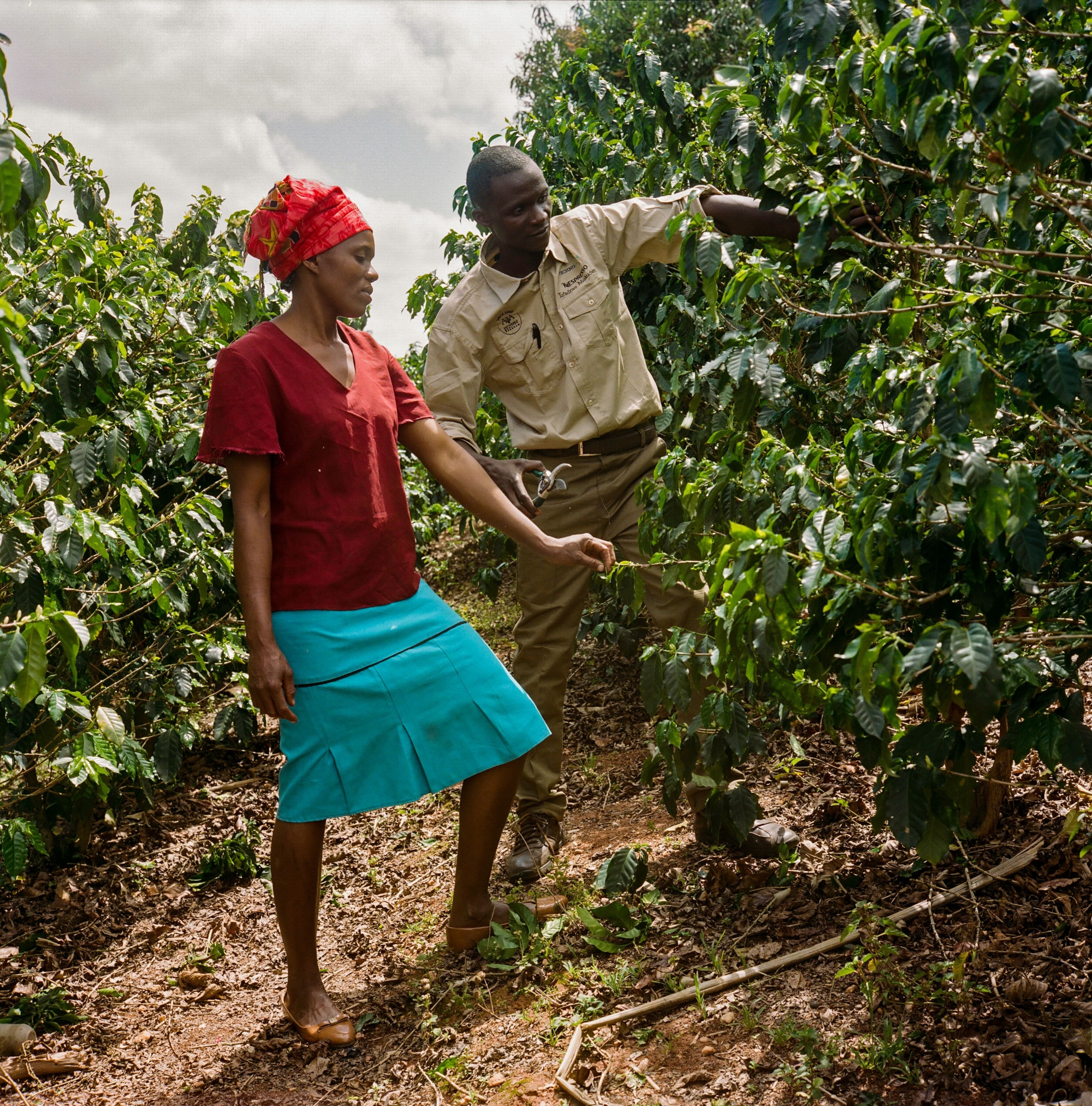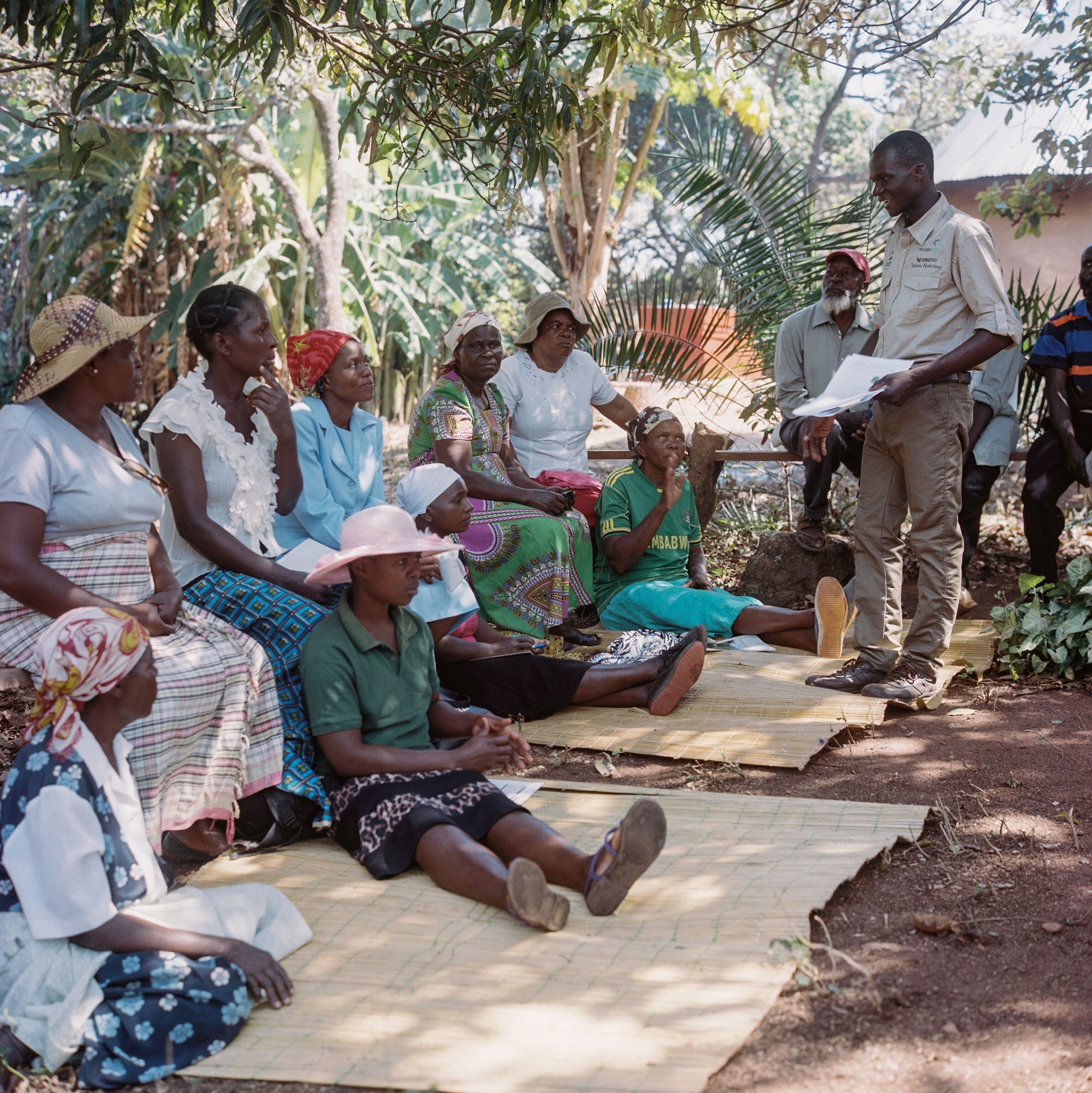Revitalizing Zimbabwe’s coffee farms through education
Revitalizing Zimbabwe’s coffee farms through education

Taking coffee from bean to cup is a complex process. A wealth of knowledge is needed to farm those beans, to harvest, process, and roast them. In Zimbabwe, drought and economic crisis all but wiped out the coffee industry and much of that essential knowledge with it. Agronomist Tafadzwa Nyakuchena works with the Nespresso AAA Sustainable Quality Program™ to help farmers to regain that knowledge, and benefit from updated methods, in order to produce outstanding beans, and help revive the country’s coffee industry.
Tafadzwa hails from Samanga village, in the Mutasa district of Zimbabwe’s Eastern Highlands. Growing up on a farm, Tafadzwa is familiar with other crops, including bananas and sugar beans, but coffee is his passion. “Zimbabwe has the ideal climate and good soils to grow coffee,” he says. “The cool temperatures, high rainfall, and lush valleys of the Eastern Highlands provide a rich growing environment.” He has worked with the Nespresso AAA Sustainable Quality Program since 2018 as part of the Nespresso AAA Academy, a joint venture supported by Nespresso and TechnoServe, an international nonprofit that works to combat poverty in the developing world. The academy provides agronomic advice and training to coffee farmers in Zimbabwe, with the goal of revitalizing the country’s once-flourishing coffee sector and improving the livelihoods of local residents.

By sharing his technical expertise on coffee agronomy and processing with farmers, Tafadzwa helps them produce the highest quality beans, which in turn brings them a higher price and helps local communities. He works with planters in five different wards in Mutasa district, covering eight farmer groups in total. Along with providing training for farmers, he also provides on-site advice during door-to-door visits in the communities to encourage adoption of recommended best practices. This has led to a marked improvement in farming methods, and higher yields of high quality beans.Working with local farmers, Tafadzwa a discovered that there were several key areas that he was able to provide much needed support. “The farmers were planting their coffee wrongly, especially on hole preparation—they were not using the right measures for width and depth,” Tafadzwa says. In addition to more precise planting, those farmers are now using natural and biological pest management methods, carefully analyzing their soil for nutritional deficiencies, and practicing better crop hygiene by removing old and dried cherries from the coffee trees. “On harvesting, they now know the right cherry to harvest—blood red ripe cherries—and they are careful not to let a coffee cherry fall on the ground,” he says. Under the academy’s training, farmers have also learned how to scout for pests and diseases in their trees, sort their coffee between harvesting and pulping (instead of mixing cherries at different ripening stages), and provide the right amount of shade for the coffee trees.
A key improvement that Tafadzwa demonstrates is pruning training. As with many crops, coffee trees need to be pruned regularly in order to produce the best fruit. During the first few years after planting, trees will grow many branches, eventually using up the nutrients in the soil to feed the sprawling wood. At the first harvest, a tree will produce a lot of berries, but subsequent yields will be much diminished. Therefore, the trees must be pruned to control the number of branches, maintain their strength and shape, and keep them from becoming too tall, so that farmers can still easily pick the berries.

Under the academy’s pruning and rejuvenation module, Tafadzwa teaches farmers how and when to cut down old stems so that coffee trees can start a new cycle. Working in the field at demo plots, agronomists show the technique to farmers, then put them in groups to try it themselves, while also offering advice and addressing any challenges that may arise. “We train farmers to remove all unwanted branches and open the tree up for sunlight to penetrate and air to freely circulate. Good light penetration and aeration results in more flowers, and fewer pests and diseases,” he says.
The result of this is that coffee trees end up producing more cherries while needing less fertilizer. Even more importantly, healthier trees lead to better coffee. “A major benefit of pruning is that young main stems are more efficient in nutrient utilization, improving the quality of the coffee,” Tafadzwa says. “The bean gets bigger and heavier.”
For twenty years, Zimbabwe’s coffee farms struggled to stay viable. Now, thanks in part to the outreach by Nespresso and the academy, the crop is slowly seeing a resurgence, with more farmers taking part in the academy’s learning modules and preparing to plant coffee every season. Tafadzwa is hopefull that that many members of his community will become involved in coffee farming, especially young people, and many are in fact already seeking out his expertise. “I’m currently assisting a group of 15 youths who approached me wanting to start growing coffee, and am training them on how to establish coffee nurseries,” he says.
Despite the complexities of coffee farming, it is a crop that holds a high level of appeal for Zimbabwe’s farmers. Higher profit margins, and support to grow from major industry partners like Nespresso, mean greater income for farmers. More income means more community growth, and higher standards of living. For Tafadzwa and his community, the growth of the coffee industry in their country heralds a brighter future.






